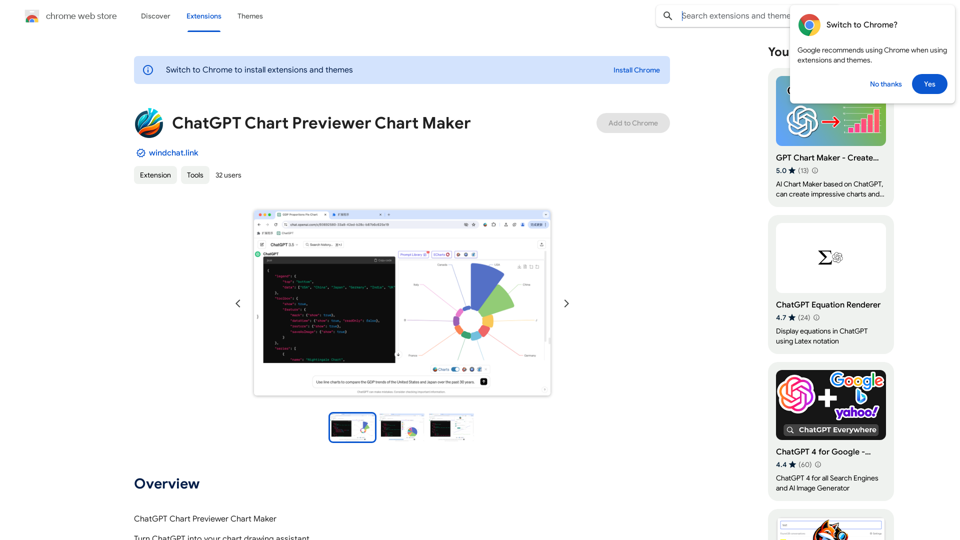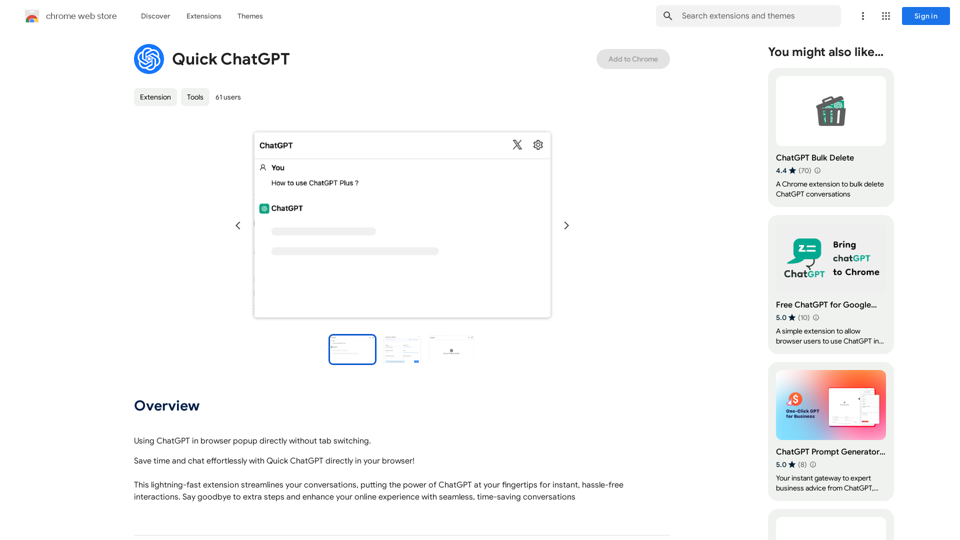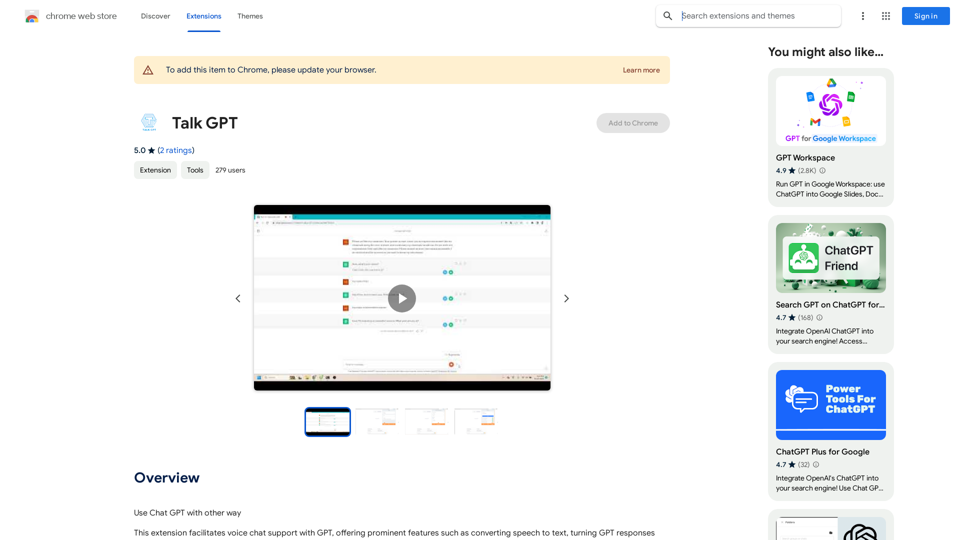The Chrome Web Store is a platform for developers to create and distribute web applications, extensions, and themes for Google Chrome. It serves as a centralized hub for users to discover, download, and manage Chrome extensions and themes. The store offers easy installation, management features, and a wide variety of add-ons to enhance the browsing experience.
Chrome Web Store
Enhance your browser with new features and tailor your browsing experience to your preferences.
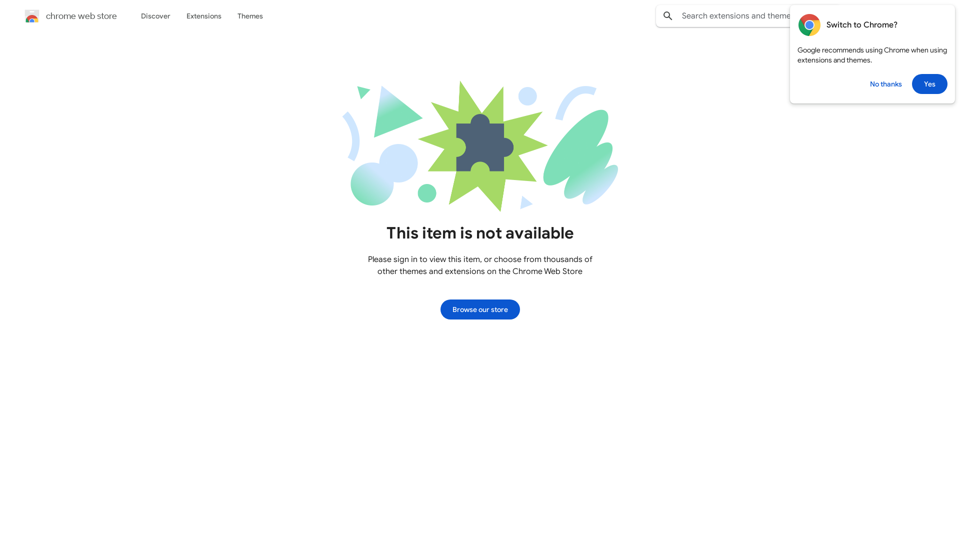
Introduction
Feature
Discoverability and Browsing
The Chrome Web Store showcases a vast collection of extensions and themes, allowing users to explore and discover new tools to enhance their browsing experience. Users can browse through categories, filter by ratings, and search for specific functionalities.
Easy Installation Process
Installing extensions and themes is straightforward:
- Find the desired extension or theme
- Click the "Add to Chrome" button
- Follow the prompts to complete installation
Centralized Management
Users can efficiently manage their installed extensions and themes:
- Access the "My extensions" or "My themes" tab
- Enable or disable add-ons as needed
- Keep track of all installed items in one place
User-Friendly Interface
The Chrome Web Store offers:
- Intuitive navigation
- Clear categorization of add-ons
- User ratings and reviews for informed decisions
Free Access
The Chrome Web Store is completely free to use, with no costs associated with:
- Browsing the store
- Discovering new add-ons
- Installing extensions and themes
FAQ
How do I access the Chrome Web Store?
To access the Chrome Web Store:
- Open Google Chrome
- Click on the "Sign in" button in the top right corner
- Enter your Google account credentials
Are there any security concerns with using extensions?
While the Chrome Web Store is generally safe, it's important to:
- Install extensions only from trusted sources
- Regularly update installed extensions for the latest security patches
- Review permissions requested by extensions before installation
Can I customize my browsing experience with the Chrome Web Store?
Yes, you can customize your browsing experience by:
- Experimenting with different extensions and themes
- Combining various add-ons to suit your needs
- Regularly exploring new offerings in the store
Latest Traffic Insights
Monthly Visits
193.90 M
Bounce Rate
56.27%
Pages Per Visit
2.71
Time on Site(s)
115.91
Global Rank
-
Country Rank
-
Recent Visits
Traffic Sources
- Social Media:0.48%
- Paid Referrals:0.55%
- Email:0.15%
- Referrals:12.81%
- Search Engines:16.21%
- Direct:69.81%
Related Websites
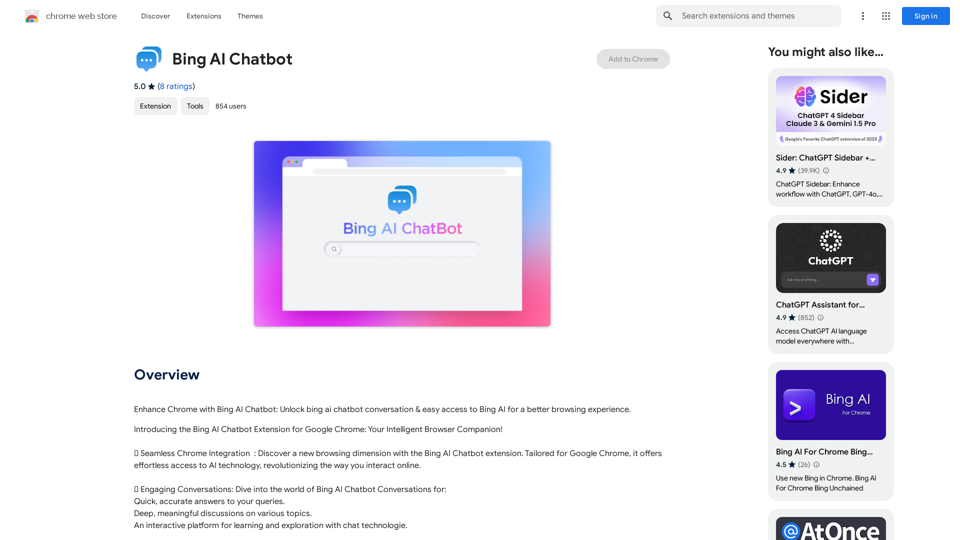
Bing AI Chatbot Bing AI Chatbot is a conversational AI developed by Microsoft, which uses natural language processing (NLP) technology to understand and respond to user queries.
Bing AI Chatbot Bing AI Chatbot is a conversational AI developed by Microsoft, which uses natural language processing (NLP) technology to understand and respond to user queries.Enhance Chrome with Bing AI Chatbot: Unlock Bing AI chatbot conversation and easily access Bing AI for a better browsing experience.
193.90 M
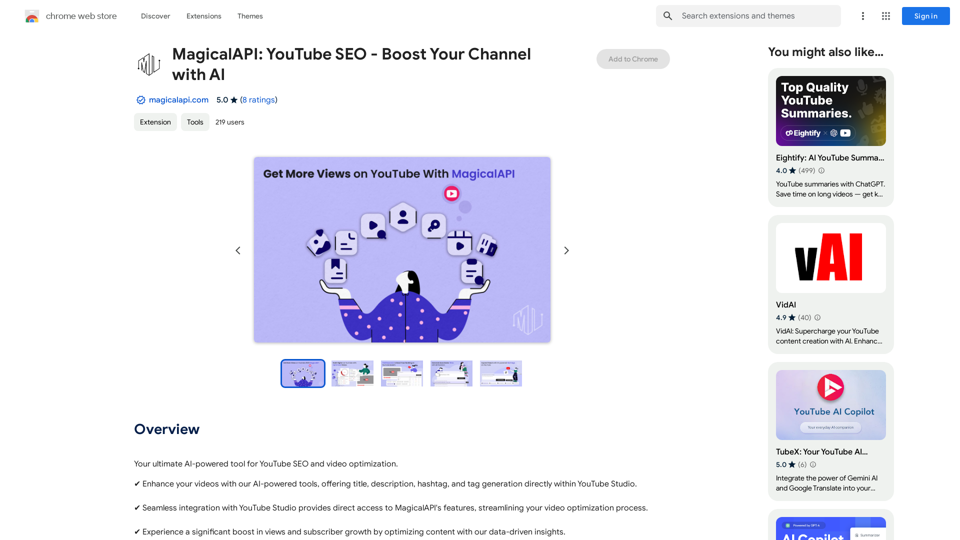
MagicalAPI: YouTube SEO - Boost Your Channel with AI
MagicalAPI: YouTube SEO - Boost Your Channel with AIYour ultimate AI-powered tool for YouTube SEO and video optimization.
193.90 M
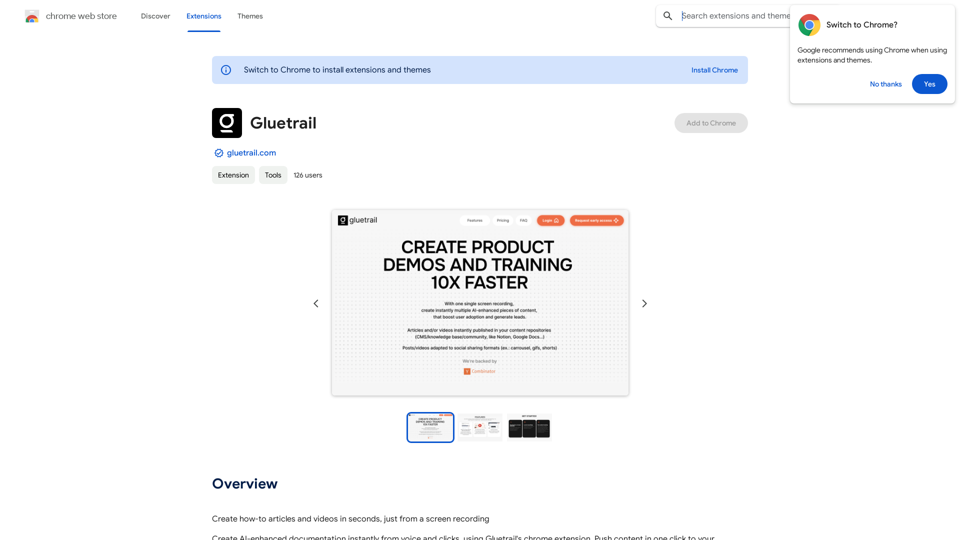
Turn Screen Recordings into How-To Content in Seconds! Tired of spending hours editing videos for tutorials? Introducing [Your Product Name]! Our revolutionary tool lets you instantly transform your screen recordings into professional-looking how-to articles and videos. Here's how it works: 1. Record your screen: Capture your steps clearly and concisely. 2. Upload to [Your Product Name]: Our AI does the heavy lifting. 3. Get your content: Choose from automatically generated articles or polished videos, ready to share! [Your Product Name] is perfect for: * Educators: Create engaging online lessons. * Businesses: Train employees efficiently. * YouTubers: Boost your content creation speed. Stop wasting time editing. Start creating with [Your Product Name]!
193.90 M
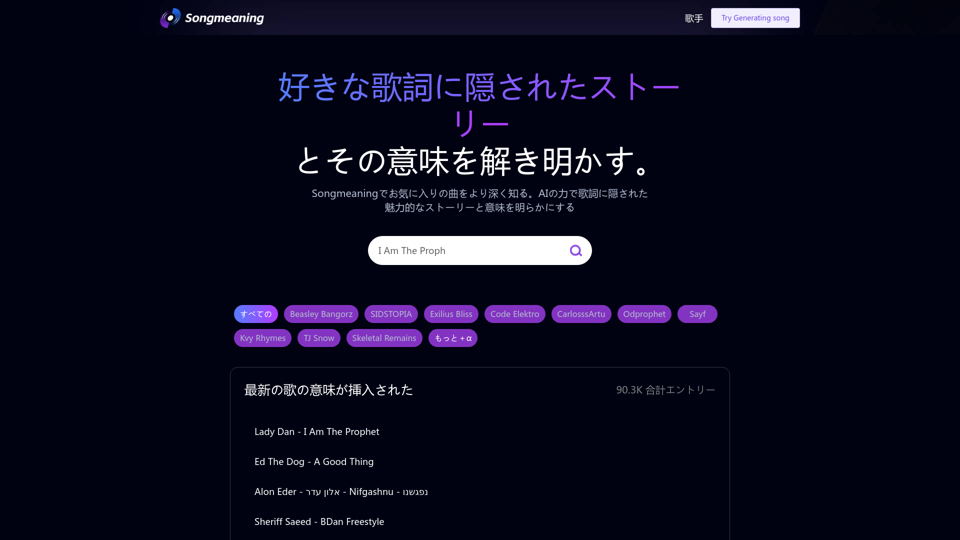
Songmeaning - Uncovering the Hidden Story Behind Your Favorite Song Lyrics
Songmeaning - Uncovering the Hidden Story Behind Your Favorite Song LyricsLet's unlock the hidden depths of your favorite song with the power of AI. With Songmeaning, let's uncover the true meaning behind your favorite lyrics.
84.13 K
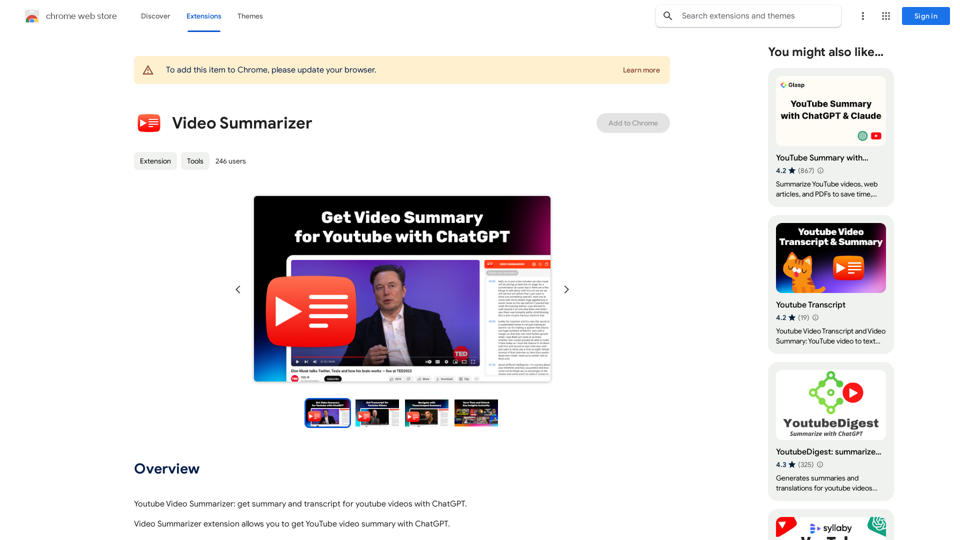
Youtube Video Summarizer: Get Summaries and Transcripts for YouTube Videos with ChatGPT This tool helps you quickly understand YouTube videos by providing: * Summaries: Concise overviews of the video's main points. * Transcripts: Full text versions of what is spoken in the video. Both summaries and transcripts are powered by ChatGPT, allowing for accurate and insightful analysis.
193.90 M
